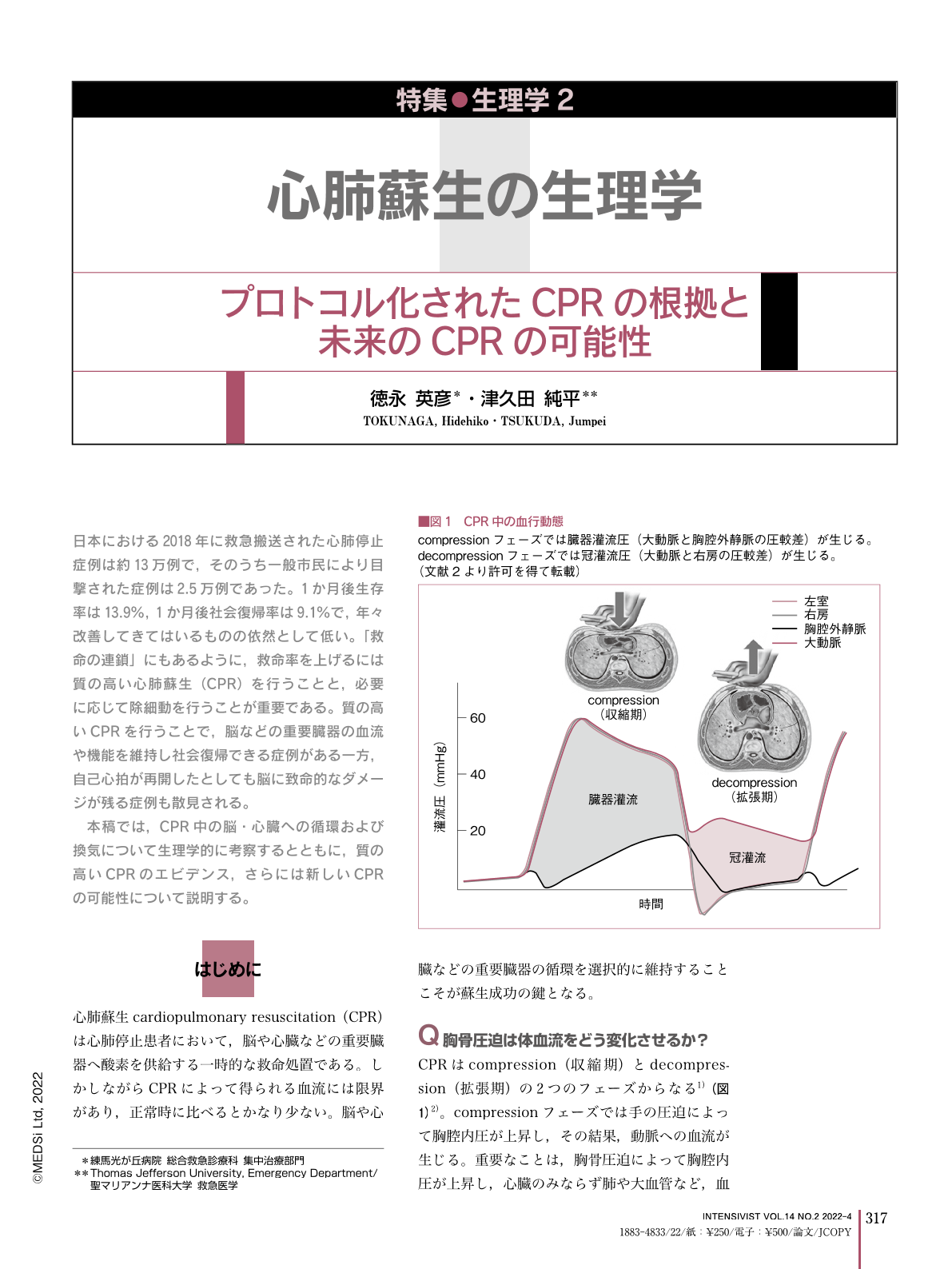Japanese
English
- 有料閲覧
- Abstract 文献概要
- 1ページ目 Look Inside
- 参考文献 Reference
日本における2018年に救急搬送された心肺停止症例は約13万例で,そのうち一般市民により目撃された症例は2.5万例であった。1か月後生存率は13.9%,1か月後社会復帰率は9.1%で,年々改善してきてはいるものの依然として低い。「救命の連鎖」にもあるように,救命率を上げるには質の高い心肺蘇生(CPR)を行うことと,必要に応じて除細動を行うことが重要である。質の高いCPRを行うことで,脳などの重要臓器の血流や機能を維持し社会復帰できる症例がある一方,自己心拍が再開したとしても脳に致命的なダメージが残る症例も散見される。
本稿では,CPR中の脳・心臓への循環および換気について生理学的に考察するとともに,質の高いCPRのエビデンス,さらには新しいCPRの可能性について説明する。
In 2018, approximately 130,000 adults in Japan suffered out-of-hospital cardiac arrest. About 25,000 events were witnessed with overall survival averaging 13.9% after their initial hospitalization and 9.1% with good neurological status. These rates have been improving but are still not ideal. To obtain improved survival and neurological function, high-quality cardiopulmonary resuscitation (CPR) and public use of automated external defibrillators (AEDs) are important keys shown in the Chain of Survival. High quality CPR is not adequate to maintain perfusion to vital organs such as the brain and heart compared with normal physiological status. Therefore, some patients develop severe brain damage even after return of spontaneous circulation. In this chapter, we will study the science of circulation and ventilation during CPR from the physiological standpoint as well as the potential of new CPR methods and devices.

Copyright © 2022, MEDICAL SCIENCES INTERNATIONAL, LTD. All rights reserved.


